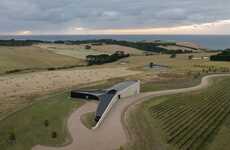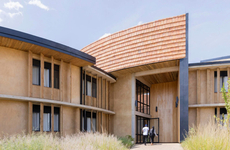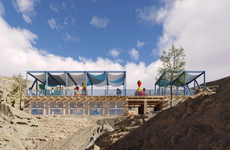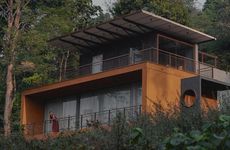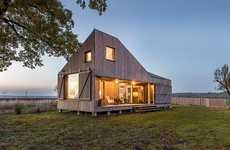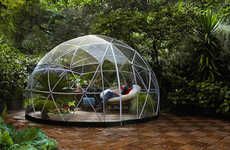
This Rammed-Earth Wall Provides Housing for Temporary Workers
Katherine Pendrill — September 14, 2015 — Eco
References: luigirosselli & treehugger
Australian firm 'Luigi Rosselli Architects' recently designed a rammed-earth wall that provides housing for seasonal workers. In remote parts of West Australia it is difficult for cattle ranchers to find temporary housing. This structure provides a unique solution for housing seasonal employees.
The rammed-earth wall is located in West Australia and it spans 754 feet in length. The wall is built on the edge of a sand dune, meaning that it is partially submerged. Inside of the wall there are a number of individual residences that provide simple yet functional accommodations for seasonal workers. The wall itself is made from locally sourced clay and measures 17.7 inches in thickness. The roof is also made from sand, which helps to keep the interior cool.
The earth-covered residences provide the perfect solution for housing seasonal employees in harsh environments such as Australia.
The rammed-earth wall is located in West Australia and it spans 754 feet in length. The wall is built on the edge of a sand dune, meaning that it is partially submerged. Inside of the wall there are a number of individual residences that provide simple yet functional accommodations for seasonal workers. The wall itself is made from locally sourced clay and measures 17.7 inches in thickness. The roof is also made from sand, which helps to keep the interior cool.
The earth-covered residences provide the perfect solution for housing seasonal employees in harsh environments such as Australia.
Trend Themes
1. Rammed-earth Construction - The use of rammed-earth construction provides a sustainable and low-cost solution for creating housing in remote areas.
2. Subterranean Structures - Building partially submerged structures offers unique opportunities for efficient and space-saving housing designs.
3. Environmentally-friendly Materials - Utilizing locally sourced and eco-friendly materials like clay and sand can help reduce the carbon footprint of construction projects.
Industry Implications
1. Construction - The construction industry can benefit from embracing rammed-earth construction techniques and incorporating sustainable materials into their projects.
2. Hospitality - The hospitality industry can explore the use of subterranean structures to provide unique and eco-friendly accommodations for guests.
3. Agriculture - The agriculture industry can adopt subterranean housing solutions to provide temporary housing for seasonal workers in remote farming areas.
5.7
Score
Popularity
Activity
Freshness


